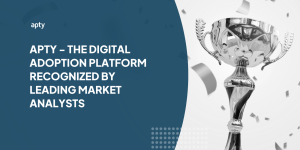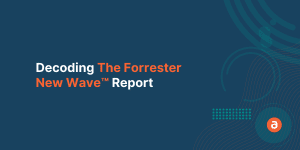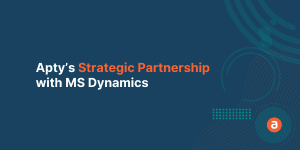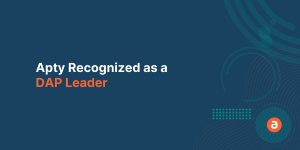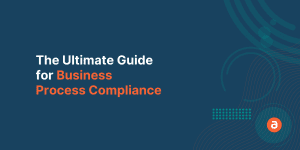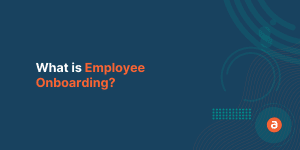Employees are a company’s most important asset and if they quit within a few months of joining, it affects the company’s reputation as well as its bottom line. A positive onboarding experience assures your employees that they have made the right decision by joining your organization.
Employees quit for several reasons. It can be because they don’t find the desired value from the company in the initial phase or due to a lack of clarity on their role.
If the employees leave in the initial stage, all the hard work, and resources invested by the organization to hire them to go in vain. This creates a lot of pressure on HR Managers. The ideal solution is to create a well-defined employee onboarding process that can address the underlying problems in handling a new hire.
A proper employee onboarding process can enhance the employee experience from the very first interaction and motivates them to stay with the organization longer.
This guide will discuss employee onboarding in great detail and by the end of it, you will learn how to implement it successfully.
What is Employee Onboarding?
Employee onboarding is the process of introducing a new hire to the company’s environment and culture and helping them understand their job role by providing the right information and tools.
It is a long process and can vary from one organization to another. For this reason, any organization’s onboarding process should be custom-built for their requirements. During onboarding, employees learn information that is crucial to carry out their work at the organization.
Going forward, the company can establish onboarding milestones for the employees and create an ecosystem where they are equipped with relevant information, knowledge, resources, and environment to accelerate their growth.

In some organizations, there is a misconception that employee onboarding takes place for few days to a week. Well, this cannot be farther from the truth as it usually takes at least around a year to onboard a new employee.
As time passes employees grow in their careers, they learn to use new technologies. HR Managers need to coordinate with department heads to customize the process for each employee.
What do New Hires Expect from Onboarding?
New hires expect transparency during their onboarding. They want to understand how the job can accelerate their personal career growth and how their contribution can help achieve the company’s goals.
The organization must do its part and provide guidance, resources, and support, and set clear expectations for them. Informal meetings with the team members can make them more comfortable and help create an environment where they can bring up queries or doubts if they have any.
Why is Employee Onboarding Necessary?
How you onboard employees determine the way they perceive your organization. A good onboarding process increases integrity, trust, retention, ROI, and reduces employee turnover rate.
A successfully onboarded employee is a valuable asset to the business and has the potential to be a great advocate for the organization. Proper employee onboarding is essential to sustain business growth. Here are some stats that prove it:
- According to Workinstitute, the average cost of losing an employee is 33% of their annual salary.
- 31% of the people left their jobs in the first 6 months and among them, 68% left within the first 3 months.
- 70% of the employees are always looking for better opportunities for growth purposes.
- Employees who feel that they will not achieve their career goals in an organization are 12 times likely to leave. New employees are 30 times more likely to leave for the same reason.
- 30% of loss of skills happens annually as skills are not reinforced regularly through proper training and onboarding programs.
- On average, only 15% of the employees are engaged in their jobs. To sum it up, a good employee onboarding process is crucial for businesses to increase the retention rate and ensure business growth.
What are the Challenges in Employee Onboarding?
Now that we understand the importance of the employee onboarding process for a business, let’s look at some of the challenges in onboarding employees.
Now that we understand the importance of the employee onboarding process for a business, let’s look at some of the challenges in onboarding employees.
- Misalignment with the culture: The new hire may feel out of place at the company and its culture. It’s up to the department managers, team leads, and HR managers to make them feel comfortable.
- Lack of job clarity: Sometimes, after a few weeks or months, employees realize that they are not doing the job that they were hired for. The management must regularly strike conversations with employees to learn about their understanding of their role.
- Low investment in onboarding: Onboarding is a strategic initiative and an extension of the talent acquisition process. HR Managers understand the difficulty of hiring a new employee and spend a considerable amount of time and money to get the right talent. Onboarding a new employee and bringing them up to speed takes even more time. Poor onboarding may lead to a higher turnover rate and will bring the HR Managers to square one. So, the organization needs to invest just as many resources in onboarding as they do in hiring.
- Disorganized onboarding: When a new employee joins the company the Manager has to provide a seamless experience. Unfortunately, most Managers are swamped with work and ignore the onboarding of their employees. They try to make most of the new hires by making them work as soon as they join and as a result, the employee gets overwhelmed, increasing the employee attrition rate.
Relevant Read: Gain an in-depth understanding of the employee onboarding challenges
A Perfect Employee Onboarding Process
The employee onboarding process is a tool to empower new talent at the organization and prepare them to face the hurdles that lie ahead. Without onboarding, it may take 8 to 12 months for an employee to reach their full potential and there is no guarantee that an employee will stay for that long without proper guidance.
The employee onboarding process is a tool to empower new talent at the organization and prepare them to face the hurdles that lie ahead. Without onboarding, it may take 8 to 12 months for an employee to reach their full potential and there is no guarantee that an employee will stay for that long without proper guidance.
This is why a proper onboarding process is a must-have to give employees the best experience so they can reach their true potential.

A. Sending the offer letter:
The Employee onboarding process begins the moment the employee gets selected in an interview. The company presents them with onboarding forms and other documents which they are expected to fill immediately.
During this process, clear communication and continuous guidance can go a long way and help an organization gain the employee’s trust.
While sharing offer letters and other relevant documents and forms, make sure to:
- Communicate the objective of the document
- Share points of contact for any queries
- Provide complete details of the job role and department
- Clearly define the take-home salary
B. Offer acceptance
Once the offer is accepted, convey all the requirements, benefits, and expectations of the job role. Arrange a call with the manager or team lead to welcome them. Talk about the organization’s vision and goals and share documents that help them understand more about the organization.
During this period, be prepared to solve all the queries and concerns of the new hire. This helps the organization develop a strong connection with them.
C. The first day
The employee will be excited for their first day at work but will also be nervous about what’s to come. It is the responsibility of the HR Managers to make them feel comfortable and give them a warm welcome.
Once you lay the foundation of clear communication in the early stages, it will be easier for them to connect with the rest of the team. Here are a few things that should be in place:
- Provide all essentials resources required to start their job (their work laptop, software, etc.)
- Assign a go-to person to reach out for any query
- Provide details for the payroll and employee benefits
- Keep an employee onboarding checklist ready
D. Introduction to team members
Prepare team members who have to interact on a regular basis with the new employee, to welcome the employee on the first day and interact with them. Initiating conversations right from the first day will speed things up in terms of streamlining the team’s communication process. Assign a mentor to introduce all the relevant people to the new employee with whom they will coordinate.
Arrange team lunches and other events to create a friendly environment where they can get to know the team members. Help them share their thoughts and opinions so the employees understand the unique perspective of the new hire and vice versa.
E. Showcase avenues for growth
Right from the first week, show them the value that they can add to the company and present them with all the opportunities for them to learn and grow along with the organization.
Show the employee how in the past, employees who performed well have been recognized for their efforts and been supported with all the opportunities for their personal growth. Use this to motivate them to do better.
Also, discuss the expectations the company has from them. Both of these combined will motivate the employee to work towards a common goal that benefits them as well as the company.
F. Provide on-demand training
Once the employee spends a day or two understanding the ins and outs of the organization, it is time to start their training. It is sometimes exciting for employers to start with more than one training method at once.
If they are put through intensive training, chances are that they won’t learn a great deal from it. Traditional class-room style training methods take up a lot of the employee’s time and are ineffective. People usually forget most of what they learn in such training within a day.
So, initially, use self-service training tools that can provide employees support within the application and can help them complete tasks with walkthroughs. This way, the employees learn on the job from the first day. If necessary, you can help them complete certification programs to master their role.
G. Review the progress
An onboarding process is only successful if it is tracked and measured to find out if it has brought in expected results. It is important to see the growth the new hires have achieved during the whole process because this data helps you remove obstacles that they are facing, to improve the process. This can be done by arranging regular check-ins, 30, 60, 90, and 180 days after the onboarding has begun.
The HR Managers can measure the efficiency of the designed onboarding process to improve upon it. Learn what they did and did not like and based on this, optimize the process to improve the experience. HR Managers can use an analytics application to measure employees’ efficiency over time. This helps identify roadblocks and fix them.
The recipe for a successful onboarding is regular evaluation. Start by implementing the best industry practices but gradually optimize them to align with the organization’s and employees’ needs.
H. Celebrate milestones
The new employee might feel unsure about their work and their contribution to the company. Their small hiccups can make them doubt themselves. The management must acknowledge the efforts of each employee, celebrating their milestones, and providing feedback on their work.
Best Practices for Designing an Employee Onboarding Process
There are some standard procedures you can follow to maintain the quality of onboarding that require minimal resources to maintain.
There are some standard procedures you can follow to maintain the quality of onboarding that require minimal resources to maintain.

Follow these best employee onboarding practices to create an effective employee onboarding program:
1. Provide a detailed job description
Be completely transparent with the employee from day 0. Provide the following details before the employee joins the company:
- The job role
- Location of the office
- Date of joining
- Activities on day 1
- Key results expected
- Department’s goals
- Organization’s goals
2. Prepare an Onboarding Checklist
According to Glassdoor, onboarding improves employee retention by 82% and productivity by 70% but unfortunately, only 12% of the organizations do a good job while onboarding employees. The rest of the organizations are wasting resources and are unable to get a productive workforce.
A new employee onboarding checklist helps you document all the activities that need to be carried out without missing any key tasks.
3. Enable inter-departmental function
Most jobs involve communication across several departments. So, introduce the new employee to the point-of-contact from each department to help them foster a connection. It will help them better understand how the company functions from a broader perspective.
4. Define short-term and long-term goals
In addition to providing a job description, it is important to check whether the new employee understands it and if their work aligns with the said description. If not, clarify it and establish short-term and long-term goals.
It is also important to have monthly meetings for the new hire’s first 6 months to understand their maturity within the organization.
5. Familiarize them with technology
Within the first week, introduce them to the technologies that they will need to use in their job. Deploy tools like Digital Adoption Platforms to streamline technology adoption.
DAPs can also be used to streamline orientation, onboarding, and training. Make the training program and learning material easily accessible to them whenever they need it and ensure that they can make most of the available resources.
6. Keep it a little casual
It is important to keep the environment a little casual within the organization. You can use platforms like Slack or Yammer to let them share books, music, movies, and different types of hobbies that the employees might enjoy discussing. It also helps them make new friends across different departments and become more connected. Initiate team lunches to make the employees have a bond outside of work.
Relevant Read: Employee Onboarding Questions that Apty helps you Answer
Some Remote Onboarding Tips
Most organizations are now opting for a Hybrid workplace and some of them have even gone completely remote. Employees have adapted to this new model of work and organizations are also using it to their benefit.
Most organizations are now opting for a Hybrid workplace and some of them have even gone completely remote. Employees have adapted to this new model of work and organizations are also using it to their benefit.
But due to remote work culture, the approach has changed to digital onboarding. This can bring up a few issues.

However, new technologies, if leveraged the right way, can make remote onboarding easier. Here are some things to keep in mind while remotely onboarding employees.
- Deliver all the onboarding essentials to the new employee before the first day. Connect them with the IT team to help them configure their system and applications.
- Since employees are mostly handling tasks by themselves, sequence the onboarding activities from easy to difficult. This way the employee’s energy will not get drained in the initial phase.
- Arrange one-on-one and team meetings for the employees to get to know each other. Schedule them strategically so they get to know their colleagues without getting overwhelmed.
- Introduce them to all applications and tools that they will use and give them a guide on how to use them. If it involves any complex application, use a Digital Adoption Platform to guide them at each step through software walkthroughs. Apty allows walkthroughs that span across multiple applications.
- Prepare recorded training sessions to facilitate remote training using blended and on-demand methods.
Keep Optimizing
As the industry and technologies change, your onboarding process must also evolve. Most companies are embracing digital disruption and leveraging Digital Adoption Platforms to make this disruption work to their benefit.
As the industry and technologies change, your onboarding process must also evolve. Most companies are embracing digital disruption and leveraging Digital Adoption Platforms to make this disruption work to their benefit.
Continue optimizing your onboarding and training processes to keep up with the changing tides. Although, something that will stay the same is the people that work for your organization.
They still need the best kind of assistance, onboarding, and training to be able to perform at their best. Empower your employees with the right tools and the rest will fall in place.

